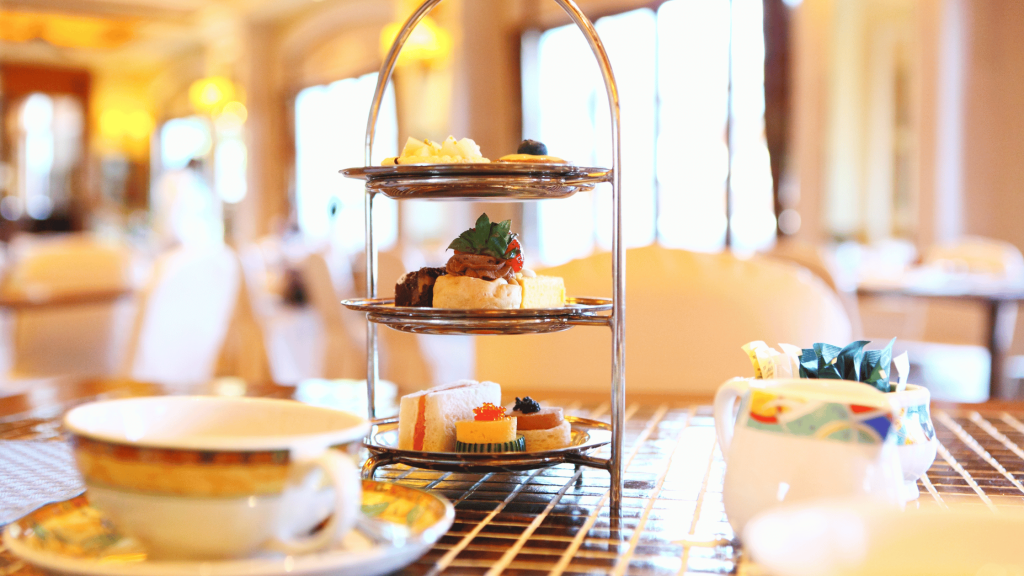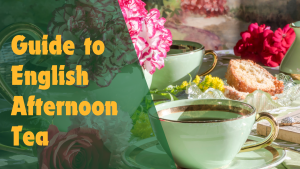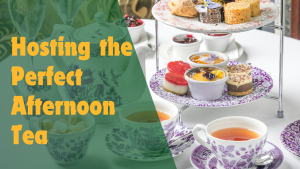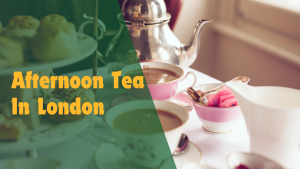Introduction to Tea Traditions in the UK
As I sit in my cozy London kitchen, sipping a warm, aromatic cup of Earl Grey, I’m reminded of the profound role that tea plays in our daily lives here in the United Kingdom. The seed of our discussion today—what is the difference between high tea and afternoon tea—plants itself deeply in the rich soil of British tradition and culture. According to a fascinating study by the UK Tea & Infusions Association, an impressive 84% of the British population drinks tea every day, with over 100 million cups consumed daily across the nation. This statistic not only highlights the beverage’s popularity but also underscores the intricate layers of tradition that tea drinking entails in British society.
The Heritage of Afternoon Tea and High Tea
The Elegance of Afternoon Tea
Delving into the tradition of afternoon tea, we uncover its roots in the early 19th century. It emerged as a mini meal to stem the hunger between lunch and dinner. The Duchess of Bedford is often credited with creating this tradition, finding herself peckish around 4 pm. The afternoon tea menu typically consists of a selection of dainty sandwiches, scones served with clotted cream and jam, and, of course, a selection of teas. This meal served in the late afternoon is not only about satiating hunger but also about pausing to enjoy the finer things in life. It’s a quintessentially British practice that embodies elegance and leisure.
The Heartiness of High Tea
Contrary to what many might think, high tea is quite distinct from the afternoon tea. Originating during the Industrial Revolution, high tea was a meal for the working class, taken standing or sitting on high stools, thus its name. This meal was more about practicality and sustenance, served after the workday, featuring heartier dishes like meat, pies, and bread. Unlike its elegant cousin, high tea was a necessity, a filling meal for those who needed to replenish their energy after a long day of labor.
In these two traditions, we see the spectrum of British society and the ways in which the simple act of drinking tea can manifest. One offers a moment of leisure and luxury in the late afternoon, while the other provides comfort and sustenance in the evening. Both, however, play integral roles in the tapestry of UK’s culinary history.
Key Differences Between Afternoon Tea and High Tea
Timing and Tradition
One of the most pronounced differences between afternoon tea and high tea lies in their timing. Afternoon tea, as the name suggests, is taken in the late afternoon, typically around three to four o’clock. It’s a pause, a breather from the day’s activities, often enjoyed in a serene setting that allows for conversation and relaxation. High tea, on the other hand, is served later in the day, around five to six o’clock, catering to the working class returning home after a day’s labour. It’s a meal that marks the end of the workday, a transition into the evening’s rest.
Setting the Scene
The setting in which these meals are enjoyed also starkly contrasts. Afternoon tea is often associated with luxury and leisure, enjoyed in plush living rooms or elegant tea houses with fine china and silverware. It’s an occasion that calls for a certain dress code, adhering to the refined atmosphere of the setting. High tea, conversely, is much more homely and less formal. It’s typically enjoyed at the kitchen table, focusing on comfort and sustenance rather than opulence.
Menu Mysteries Unveiled
The menus for these two tea traditions further highlight their differences. Afternoon tea is known for its array of delicate finger sandwiches, scones with clotted cream and jam, and a variety of pastries and cakes, accompanied by a selection of teas. It’s as much about the experience and the presentation as it is about the food itself. High tea, meanwhile, features a more robust menu, including meats, pies, cheeses, and bread, alongside tea. It’s a meal meant to satisfy hunger, providing a hearty end to the day.
The Role of Tea: Morning vs. Afternoon Blends
Awakening with English Breakfast
When discussing tea blends specific to different times of the day, English Breakfast tea stands out as a morning favourite. This full-bodied, rich blend is designed to invigorate and awaken. Traditionally made from a mix of Assam, Ceylon, and Kenyan teas, English Breakfast is the perfect accompaniment to a hearty British breakfast, offering a robust flavour that pairs well with both sweet and savoury dishes.
Soothing with Afternoon Tea Blends
In contrast, afternoon tea blends are lighter and more delicate, crafted to complement the finer foods of afternoon tea without overwhelming the palate. These blends might include Darjeeling, known as the “Champagne of Teas” for its light, floral notes, or Earl Grey, with its distinctive flavour of bergamot orange. The choice of tea is as much a part of the afternoon tea tradition as the food, with each blend offering its own unique contribution to the sensory experience.
The transition from the robustness of a morning tea to the subtlety of an afternoon blend mirrors the shift in energy and focus throughout the day. While morning teas kickstart the day with bold flavours and a caffeine boost, afternoon teas offer a moment of respite, an invitation to slow down and savour the flavours and the company.
Cultural Significance and Modern Interpretations
Tea’s Timeless Appeal
Tea, for centuries, has been more than just a beverage in the UK; it’s a cultural institution, embodying the nation’s history, traditions, and social customs. This deep-rooted cultural significance is evident in the continued popularity of both afternoon tea and high tea, each carrying its own historical and social connotations. While afternoon tea has remained a symbol of leisure and luxury, high tea represents the no-nonsense, robust work ethic of the British working class. These traditions, while originating from different classes and purposes, collectively underscore the UK’s diverse social fabric and the unifying nature of tea across different strata of society.
Contemporary Tea Trends
In recent years, we’ve seen a fascinating evolution of these tea traditions, blending the old with the new to cater to contemporary tastes and lifestyles. Artisanal tea shops and modern tea rooms are redefining the tea experience, offering a fusion of traditional and exotic blends, along with vegan and gluten-free food options. The resurgence of interest in tea ceremonies and the increasing popularity of “tea tourism” reflect a broader desire to reconnect with and re-explore traditional practices through a modern lens. This modern interpretation not only honors the past but also ensures the relevance and continuity of tea traditions in today’s society.
Crafting Your Own Tea Tradition
Hosting with Flair
Hosting an afternoon tea or high tea at home can be a delightful way to bring people together and create memorable experiences. The key to success lies in attention to detail – from selecting the right blend of tea to complement your menu to presenting your dishes in an appealing manner. For afternoon tea, consider elegant table settings with fine china and silverware, and for high tea, create a warm and inviting atmosphere that encourages relaxation and conversation. Remember, the essence of these traditions lies not just in the food and tea but in the joy of sharing and community.
Tea Selection Tips
Selecting the right tea is crucial for any tea-related gathering. For afternoon tea, opt for lighter, aromatic blends like Earl Grey or Jasmine that won’t overpower the delicate flavors of your food. For high tea, stronger, more robust teas like English Breakfast or Assam will pair well with the heartier fare. Don’t be afraid to experiment with different teas to find the perfect match for your menu and your guests’ preferences.
Mastering Tea Etiquette
While the formality of tea etiquette has relaxed over the years, there are still a few guidelines worth observing to enhance the experience. For example, when serving tea, fill the cup three-quarters full to allow room for milk if desired, and remember to offer milk and sugar on the side. When stirring your tea, gently move the spoon back and forth without clinking against the sides of the cup. These small touches can add a sense of ritual and reverence to the tea-drinking experience, making it all the more special.
In blending the traditions of the past with the trends of the present, we’re reminded that tea is more than a drink; it’s a celebration of culture, history, and the simple pleasures of life. Whether you’re a devotee of afternoon tea or a fan of the more substantial high tea, there’s a deep joy in these rituals that transcends time.
Reflecting on Tea Traditions
As I sit back and reflect on the rich tapestry of tea traditions that adorn the cultural landscape of the United Kingdom, it’s clear that these rituals are much more than mere culinary practices. They are, in essence, a reflection of the nation’s history, its social evolution, and the unifying thread that binds diverse communities. Whether it’s the refined elegance of afternoon tea or the hearty simplicity of high tea, each practice tells a story, each cup of tea carries a narrative of times gone by and of moments shared.
The journey through the world of tea is akin to traversing through time, witnessing the transformation of social customs, and observing the subtle shifts in cultural identities. Yet, amid these changes, the essence of these traditions—of gathering, sharing, and pausing to savour the moment—remains timeless. It’s a testament to the enduring allure of tea and its ability to adapt and thrive in the modern world.
In embracing these traditions, we do more than just partake in a meal or enjoy a beverage; we participate in a ritual that transcends the boundaries of time and class. We connect with the past, celebrate the present, and look forward to future gatherings around the tea table. It’s in these moments of connection and reflection that the true spirit of tea is realized—not just as a drink, but as a medium for culture, conversation, and community.
A Toast to Tea: Embracing Tradition and Innovation
In conclusion, the exploration of the differences between high tea and afternoon tea reveals much about the British way of life and its evolution. It showcases the versatility of tea as a beverage and a cultural cornerstone, capable of bridging gaps between the past and the present, the elite and the everyday. This journey into the heart of tea traditions invites us to appreciate the depth and diversity of tea culture, encouraging us to cultivate our own traditions and experiences.
As we continue to explore and experiment with tea, let us do so with an appreciation for its rich heritage and an openness to the new flavors and experiences it can bring into our lives. Whether you’re a seasoned tea aficionado or a curious newcomer, there’s always something new to discover and cherish in the world of tea. So, here’s to tea—may it continue to inspire, comfort, and bring people together, today and for many years to come.




